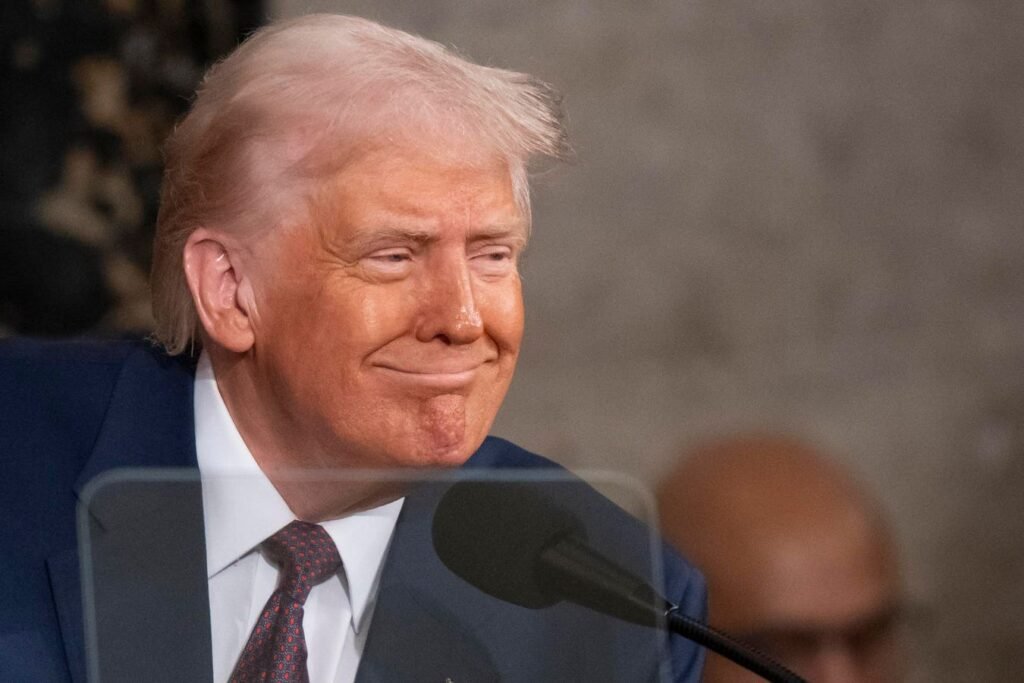President Donald Trump addresses a joint session of Congress on Capitol Hill in Washington, Tuesday, … More
In his State of the Union Address last month, President Trump told Congress that the Department of Government Efficiency had uncovered $8 million allocated by the federal government to “make mice transgender.” There is, of course, no such thing as a transgender mouse. But there are transgenic mice. Yet, in his speech the president wasn’t referring to transgenic mice. He erroneously, but purposely it turns out, claimed that taxpayer money was being spent on “transgender animal experiments.” In light of other statements made in the address to the nation, this may be part of a broader policy aimed at undermining trans health and identity.
Genetically modified mice are commonly used for research or as animal models of human diseases. Here, transgenic refers to a genetic technique that changes the DNA of laboratory animals. Scientists create transgenic animals by inserting or deleting genes. As Jeremy Faust noted, the federal government funds projects that use transgenic mice to study dozens of diseases and biological mysteries.
But Trump wasn’t alluding to transgenic mice. In fact, a day after the address, the White House doubled down by stating that “Biden did spend millions” and $8 million specifically for “making mice transgender.”
The studies in question refer to research on mouse models involving the use of hormone treatments. Specifically, researchers inject sex hormones into laboratory animals like mice and monkeys and examine the behavioral and biological effects that result from changing their hormonal profiles.
Experts believe that such experiments on mice have improved our understanding of the impact of sex hormones on a whole range of conditions, including asthma and cancer, but also reproductive health and their role in HIV vaccine responses.
It’s clear this work is not about gender transitions in mice. And so, we’re left with the question why the president would insist it is. Rolling Stone speculates that Trump may have deliberately done so in an attempt to stoke culture war flames. After all, cultural issues featured prominently during the state of the union speech, especially related to transgender issues. For instance, the president said that he “signed an order making it the official policy of the U.S. government that there are only two genders: male and female.”
And Trump remarked, “I signed an executive order banning public schools from indoctrinating our children with transgender ideology. I also signed an order to cut off all taxpayer funding to any institution that engages in sexual mutilation of our youth.” This apparently refers to hospitals and health systems that provide care for gender-incongruent minors.
It’s worth noting that if by “mutilation” the president meant surgery, such interventions in minors seeking such care are rare. But the use of cross-sex hormones and puberty blockers is more common and the subject of considerable controversy and debate in recent years.
After defunding virtually all National Institutes of Health-funded projects related to transgender health, a Nature exclusive reports that the Trump administration is instructing the NIH to study potential regret following gender transitioning.
There’s evidently more going on, however, than just targeting narrowly circumscribed trans health issues. Trans identity could be at stake, too. The policy proclaiming the existence of only two genders is one example. Additionally, federal government agencies are being subject to a purge of the use of any language that includes terms such as “transgender” and even “gender” itself.
In a New York Times opinion piece, M. Gessen wrote of “denaturalization,” or becoming excluded from the society that guaranteed their legal rights. Gessen pointed to Trump’s inaugural address and one of his first executive orders as evidence of this. Here, the president asserted that only two sexes exist: Male and female, established at conception and immutable. Trump also declared that the State Department could lawfully refuse to issue passports to transgender and nonbinary Americans that reflect their gender identities, reinforcing that the department would only issue passports that “accurately reflect the holder’s sex.” And in a separate executive order, Trump barred trans people from serving in the military. The message conveyed was that trans people do not exist, according to Gessen.
Amplifying Gessen’s concern was an incident two months ago in the House of Representatives. Fox News reported that a House Republican from Illinois, Mary Miller, introduced a transgender lawmaker from Delaware, Sarah McBride — who identifies as a woman — as “the gentleman … Mr. McBride” for a floor speech.
When asked about why she did this, Miller said, “I refused to deny biological reality,” adding, “President Trump restored biological truth in the federal government, and I refuse to perpetuate the lie that gender is open to our interpretation. It is not.”


